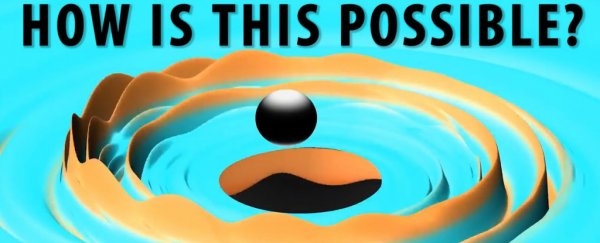By now, we're sure you're all very familiar with the fact that scientists detected ripples in space time called gravitational waves for the first time last year, almost 100 years after Einstein first predicted them.
It was, and still is, a huge deal, because now we have an entirely new way to study the Universe - and by most accounts, it was the biggest science story of 2016. But what you didn't read in all those articles and headlines was how absolutely absurd the entire process of detecting those gravitational waves really was.
Luckily, Veritasium is here to do that for us, because trust us when we say gravitational waves were very, very hard to find.
So hard, in fact, it took the world's second largest vacuum, the smoothest mirrors on the planet, a laser so powerful it could fry your head instantly, and decades of research to even begin to have a chance of proving they exist. Check it out:
As Derek from Veritasium explains, the story about detecting gravitational waves actually started 1.3 billion years ago, in a galaxy far, far away, when two black holes merged.
As they violently spiralled into each other, they blasted out distortions in the fabric of space time - gravitational waves. The energy released in those waves was 50 times greater than the energy being released by everything else in the Universe at that time combined, and they went blasting across space at the speed of light.
It was impressive stuff, but on the long, 1.3-billion-year journey to Earth, those gravitational waves got a lot smaller. So small in fact that by the time they passed through our planet, they only stretched and squeezed space by one part in 1021.
To put that into perspective, it's the equivalent of measuring the distance between here and Alpha Centauri (4.37 light-years) and then attempting to detect any variation in that distance the width of a human hair.
To even attempt to detect ripples in space that tiny, you need as large as distance as possible, which is why the LIGO observatory has arms 4 km long.
But that's just the start of the lengths researchers had to go to in order to pick out those tiny gravitational waves from all the traffic, earthquakes, electric storms, and general noise happening on Earth 24/7.
As Caltech professor and LIGO researcher Rana Adhikari tells Derek: "What we already do daily in here is what I would have said was impossible if you'd asked me 20 years ago."
We'll let the video above explain just how absurd things got for scientists, because some things need to be seen to be believed. But, trust us, you'll never think about the gravitational wave discovery the same way again.
